The role of smart phones in life is getting bigger and bigger, and the performance requirements of users are naturally rising. But the biggest difference between smart phones and traditional PCs is their mobile use habits. It is impossible to connect to the power supply all the time (of course Mobile power), how to extend the life time of smart phones under the premise of meeting the minimum use requirements has become the focus of the industry and consumers. How to solve the problem of mobile phone CPU power consumption and heat? The upstream manufacturers of the CPU are constantly striving for this. At present, there are three main methods for reducing the power consumption of the mobile phone CPU and reducing the heat. This article will introduce the analysis one by one.
CPU intelligent frequency technologyThe current mobile phone CPU officially marked the main frequency from 1.0GHz to 2.5GHz, the future mobile phone frequency will continue to upgrade, in order to extract more performance of the CPU, and under the premise of other factors, A high frequency will inevitably lead to higher power consumption, so you want to reduce the power consumption of your mobile phone. One simple and rude method is to reduce the CPU clock speed.
For example, the highest frequency of a mobile phone CPU can reach 2.5GHz, but in fact, the CPU and the real use scene and time of running at 2.5GHz are very limited, such as only when running points and using large applications or games, and this performance and The peak power consumption time is also very limited. Most of the time, the CPU may only run at a lower main frequency, such as 2.0, 1.5 or even 1.0 GHz. These performance scenarios require low performance. More, through the internal control program of the CPU, the CPU frequency can be reduced to a lower level under the premise of ensuring the user experience, so as to extend the mobile phone's battery life.
More advanced production processCompared with the frequency reduction, by improving the performance and power consumption dividend brought by the process technology, how much can the process technology bring? Let's take two examples to analyze. First, from the A7 processor on the Apple iPhone 5s, the A8 processor on the iPhone 6, and the A9 processor on the iPhone 6s, their performance is constantly improving, but the batteries of these three generations of iPhones are not rising and falling. The iPhone's battery life is still at the same level (both unscrupulous).
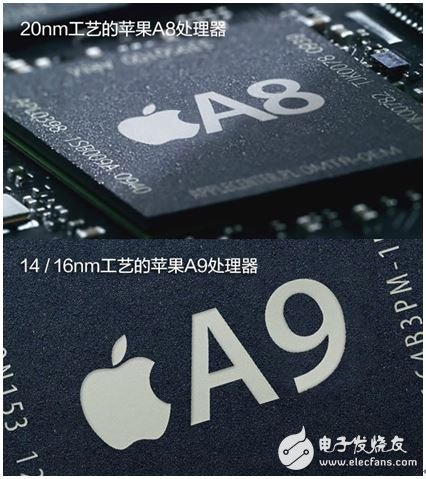
Apple A8 and A9 processors use different process
Why is this balance achieved in terms of performance and power consumption? One of Apple's methods is achieved by continuously improving the process technology. The A7 is a 28nm process, the A8 is 20nm, and the A9 is further advanced to 16/14nm.
Relationship between process technology and power consumption and performanceEssentially, a CPU (processor) is a circuit that is stacked by a number of "layers" made of different materials, including tiny components such as transistors, resistors, and capacitors. The smaller their spacing, the more components that can be placed on the chip, and the lower the capacitance between the transistors, thus increasing their switching frequency. Then, since the dynamic power consumption of the transistors when switching electronic signals is proportional to the capacitance, they can achieve more power saving while being faster.
Of course, everyone will think that Apple A7, A8, A9, in addition to the improvement of the process technology, is also very different in terms of CPU design, etc. Perhaps the above example can not better reflect the impact of the process technology, the second example is last year. Qualcomm Snapdragon 810 and Samsung Exynos 7420, one is a 20nm process technology, and the other is a 14nm process technology. From the comparison of their corresponding terminal mobile phone products last year, the 14nm Exynos 7420 is significantly better optimized in performance and power consumption. .

This year, whether it is Huawei Kirin 950, Qualcomm Xiaolong 820 or Samsung Exynos 8890 have adopted the 16/14nm process technology, how can the performance and power consumption be reduced when the process technology is basically at the same level? This is what is described below.
14nm and 16nm
Kirin 950 uses 16M FinFET Plus technology from TSMC. The Opteron 820 and Exynos 8890 are 14nm FinFET processes provided by Samsung. Since there is no actual measured data, we can only boldly guess that the two processes are at the same level. The CPU has more room for performance and power consumption.
About the processAs mentioned above, the Apple iPhone processor, the improvement of the process technology needs the support of the upstream industry and commerce, from 28nm to 20nm, then to 14/16nm, it takes a long time and huge research and development costs, more related to materials science and other science and technology. The 14/16nm follow-up progress space will be smaller and smaller, and the difficulty will gradually increase.
Process technology is still a relatively tight resource for the entire chip industry. Whether Apple, Qualcomm or Huawei actually find Samsung and TSMC for OEM production, Samsung and TSMC's 14nm and 16nm production lines are also limited. It will only serve the big customers introduced above, and only produce the most advanced flagship chips. About the chip process introduction, you can check our previous article "How much do you know about the mobile phone Soc process? 》
New autonomous architectureThe CPU architecture can be simply divided into ARM architecture and autonomous architecture. We first introduce the analysis of ARM architecture. At present, we hear the Cortex-A53, Cortex-A57 and Cortex-A72 (hereinafter referred to as A53, A57 and A72 respectively). They are all 64-bit architectures introduced by ARM. The former A53 is a relatively low-performance and low-power architecture (commonly known as the small core). The latter two are high-performance architectures (commonly known as the big core). The A57 is also accompanied by high performance. High power consumption, while the A72 is the second generation of 64-bit architecture, while improving performance, the biggest advantage is better than power consumption. In order to pursue a better combination of performance and power consumption, the big.LITTLE dual-core architecture is often used on the mobile phone CPU, that is, the small core and the core combination.
About ARMARM Holdings is the world's leading provider of semiconductor intellectual property (IP) and is therefore at the heart of digital electronics development. Headquartered in Cambridge, England, ARM has more than 1,700 employees and has offices around the world, including design centers in Belgium, France, India, Sweden and the United States.
For example, the Xiaolong 615 consists of eight cores, four of which are 1.0 GHz A53, and the other four are 1.7 GHz A53. Another example is the Snapdragon 810, which consists of four 1.5 GHz A53 and four 2.0 GHz A57 cores. of. Similar to the down-conversion described earlier, when the user just performs SMS or micro-blogging operations, only two or three of the four A53s need to be activated in the mobile phone, and only a very low power consumption is required. When the user runs a game or plays a game, it is possible that all eight large and small cores are activated and turned on. The performance of the mobile phone reaches a peak value, and the same power consumption is also extremely high, and the battery life of the mobile phone becomes very limited.
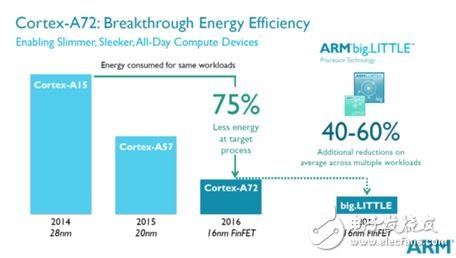
A72 architecture drops dramatically in power consumption (based on 16nm process)

The performance of the A72 architecture is much better than the original A15 and A57 (based on the 16nm process)
ARM indicates that the A72 is optimized based on the A57. From the architecture diagram and the specification table, the A72 and the A57 are not essentially different. The first-level and second-level cache capacities are the same, but some fine-tuning is done. One of them is to remove the NEON SIMD engine. With the encryption extension function, the bus interface is expanded to 128 bits. Therefore, we suspect that the performance improvement of the A72 may come from the improved optimization of the microarchitecture. However, ARM also said that the performance of the A72 is 3.5 times that of the A15 processor, and the power consumption is reduced by 75% under the same workload. In the case of the bigLittle (size core) architecture, the power consumption can be reduced by 40%-60%. .
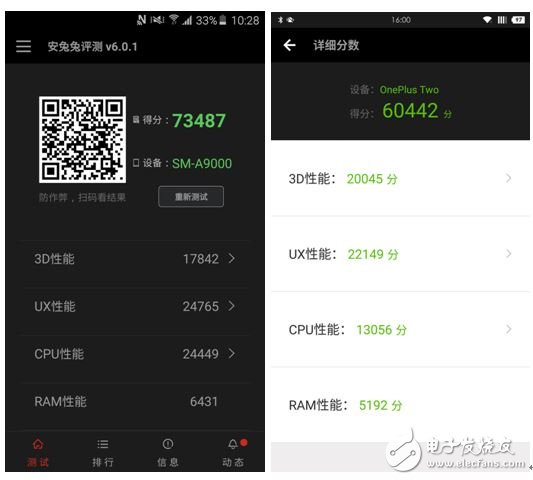
The above comparison is more of official data. Here we take a simple comparison between the Snapdragon 810 and the Snapdragon 652. The former uses a 20nm process technology and consists of four 1.5GHz A53s and four 2.0GHz A57 cores. The latter adopts the 28nm process technology. It consists of four 1.4GHz A53 and four 1.8GHz A72 cores. From the running point data and actual usage, the mid-range Snapdragon 652 is very close to the single performance running score. The previous generation of the flagship Snapdragon 810, and the fever problem has been well resolved, more suitable for the use of mobile devices.
After talking about ARM's standard architecture, let's talk about the "rich" autonomous architecture.
appleApple's iPhone initially cooperated with Samsung to launch a customized version of the processor, but for better performance, Apple gradually embarked on the road of independent research and development of processors. Apple's A-series processors are based on the ARM-based instruction set, but Apple has made a number of modifications and optimizations, in addition to better matching with its own iOS system, it has achieved industry-leading performance and power consumption.
In the development of Android phones from quad-core and eight-core to the ten-core architecture that will be launched this year, Apple still arbitrarily uses the dual-core architecture of "ancestral", but Apple's dual-core architecture is just changing, and A7 is the first 64-bit architecture. The processor was introduced to mobile phones, and the subsequent A8 and A9 processors were upgraded in order to achieve higher energy consumption. At the same time, thanks to the new core architecture, their performance was greatly improved. The quad-core, eight-core and ten-core products are still showing no weakness. Even Apple CEO Cook said that the iPad Pro with A9 processor (enhanced version) has surpassed many traditional PC products in performance.
Qualcomm and MTKApple's A-series processors and iOS are a closed hardware and software ecosystem, but for most mobile phone manufacturers and users, the hardware development of the Android platform is really concerned. At present, Qualcomm and MTK (Lianfa Technology) are the main processor suppliers of the Android platform (open channels), while Samsung and Huawei have developed their own processors, but only a small amount or no external sales processors, so this article will not discuss.
From Scorpion and Krait to this year's Kryo architecture, Qualcomm has been working hard to develop its own core architecture. Although Qualcomm had to launch the ARM standard Snapdragon 810/808 in order to meet the market demand for 64-bit processors last year, this year's éªOn the Dragon 820, Qualcomm adopted the latest Kryo 64-bit autonomous architecture. The performance of the quad-core processor surpassed last year's flagship Snapdragon 810, and it is confident in the face of this year's competitor's eight-core or ten-core products. The power consumption performance is better than that of the Snapdragon 810, which can meet the performance and power requirements of the flagship mobile device. At present, Samsung S7/S7 edge's national version, LeTV Max Pro, vivo Xplay5 Ultimate and Xiaomi 5 have already used the Shanglong 820 processor, and more mid-to-high-end products will be adopted in the future.
éªé¾™652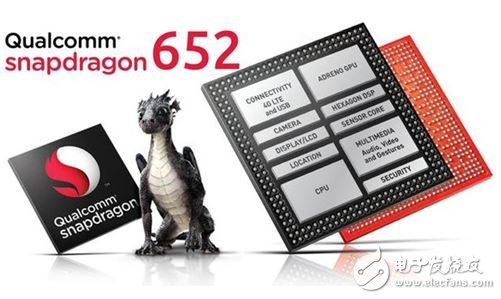
At present, Qualcomm will adopt an autonomous architecture such as Kryo in the middle and high-end products, while the products with lower positioning will still adopt the ARM standard architecture scheme, such as the Snapdragon 652/650 product that is mainly promoted this year. As mentioned earlier, thanks to the A72's power consumption dividend, the Snapdragon 652 solves the power consumption problem, and the single-performance running score is also close to last year's Snapdragon 810.
Helio X20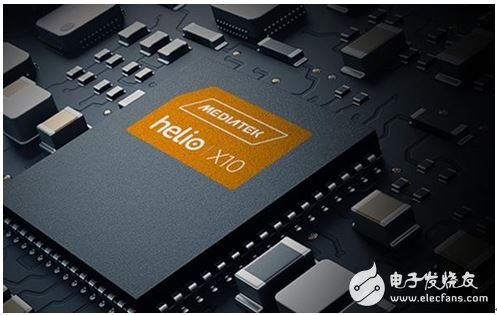
Recently, MTK finally released its latest Helio X20 processor, using Tri-Cluster ten core architecture, consisting of two A72s with a frequency of 2.5GHz, four A53s with a frequency of 2.0GHz and four A53s with a main frequency of 1.4GHz. Consisting of three clusters designed to handle a wide range of high, medium and light load work items for mobile devices. The Helio X20 is based on a 20nm process (TSMC) and also supports MediaTek's CorePilot heterogeneous computing technology. It can be used to configure CPU and GPU work, and can simultaneously manage processor performance and power consumption, while generating lower heat. To achieve better performance. According to the cooperation situation last year and the latest news, Meizu, LeTV, 360 mobile phones are expected to become the first users of the Helio X20 processor. In the second quarter of this year, the product terminal with Helio X20 processor will come. more.
to sum upAlthough the current battery power consumption problem of mobile phone processors has been greatly alleviated, how can mobile phones be more energy-efficient and how long battery life can be achieved without breakthroughs in battery technology and increasing demand for mobile phones? Persistence is still a common problem in the industry. In pursuit of performance, the author also hopes that both the manufacturer and the user will shift the focus of attention from the original performance to the endurance of power consumption, or from the simple performance to the use of experience.
Interface Encoders Decoders Converters
Interface Encoders Decoders Converters,Integrated Circuit Oem Dip Original,Temperature Sensor Ic,Pptc Resettable Circuit Protection Fuse
Shenzhen Kaixuanye Technology Co., Ltd. , https://www.iconlinekxys.com